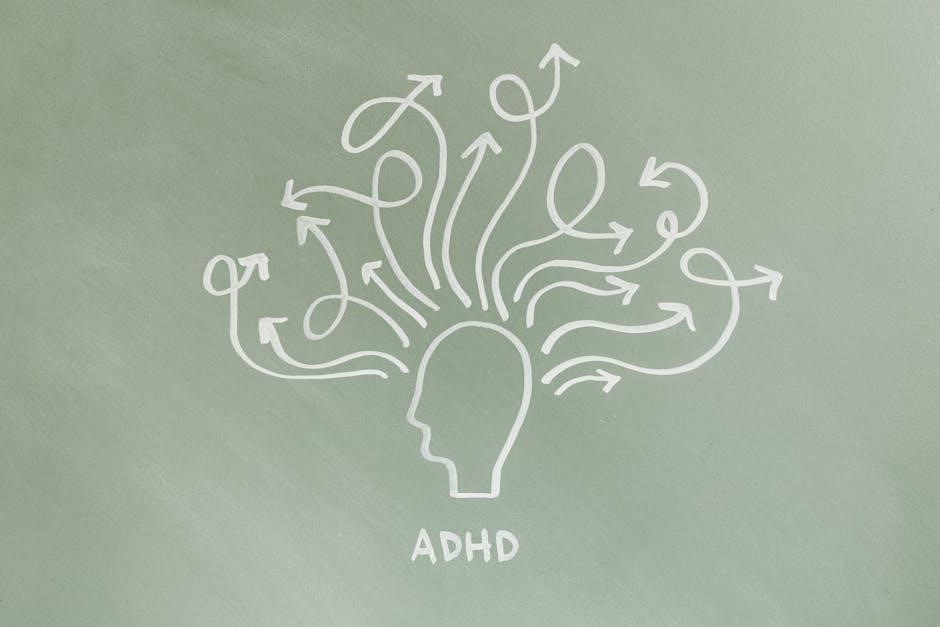Understanding the significance of behavior essays helps students reflect on their actions, take responsibility, and improve. These essays guide personal growth and positive change effectively.
1.1 Definition and Purpose of Behavior Essays
Behavior essays are reflective writings where students analyze their actions, understand their impact, and take responsibility. They serve as tools for personal growth, encouraging self-awareness and accountability. These essays help students express remorse, plan positive changes, and foster a commitment to improvement, ultimately promoting a conducive learning environment.
1.2 Importance of Reflecting on Student Behavior
Reflecting on behavior helps students understand the consequences of their actions, fostering empathy and accountability; It encourages personal growth by identifying areas for improvement and promoting positive change. Through reflection, students develop self-awareness, take responsibility for their choices, and learn to impact their environment positively, creating a more respectful and focused learning atmosphere.
Structure of a Behavior Essay
A behavior essay typically includes an introduction, personal reflection on actions, an action plan for improvement, and a conclusion. This clear structure guides students in expressing remorse and outlining positive changes effectively.
2.1 Key Components of a Behavior Essay
A behavior essay should include a clear introduction, personal reflection on actions, an explanation of why disruptive behavior is harmful, a detailed action plan for improvement, and a thoughtful conclusion. These components ensure the essay is comprehensive and meaningful, fostering accountability and growth. Proper structure and sincerity are essential for effectiveness.
2.2 How to Organize Your Thoughts Effectively
Start by brainstorming your thoughts, identifying key points to address. Create an outline to structure your essay logically, ensuring each paragraph focuses on a specific idea. Begin with a clear introduction, followed by reflection on your actions, an action plan, and a conclusion. Use transitions to maintain flow and coherence, making your essay organized and impactful.

Common Causes of Behavioral Issues in Students
Behavioral issues often stem from family problems, academic stress, and peer influence. These factors can lead to disruptions, affecting both personal and classroom environments significantly.
3.1 Family and Environmental Factors
Family dynamics and environmental factors play a significant role in shaping student behavior. Instability at home, such as parental issues or lack of support, can lead to behavioral challenges. Additionally, the surrounding environment, including school culture and community influences, can contribute to disruptive actions. Addressing these factors is crucial for fostering positive behavioral outcomes and creating a supportive learning atmosphere for all students.
3.2 Academic Stress and Peer Influence
Academic stress and peer influence significantly impact student behavior. Pressure to perform academically can lead to anxiety, causing disruptive actions. Peer influence further complicates this, as students may adopt negative behaviors to fit in or gain acceptance. These factors often result in poor decision-making and a challenging classroom environment, hindering both individual and collective learning experiences for students.
The Impact of Disruptive Behavior
Disruptive behavior negatively impacts personal learning and growth by creating a chaotic classroom environment, which hinders focus and reduces overall academic performance for all students.
4.1 Effects on Personal Learning and Growth
Disruptive behavior significantly impedes personal learning and growth by diverting attention from academic goals. Students lose focus, struggle to grasp concepts, and often fall behind peers. This hinders their ability to meet expectations, leading to lower grades and reduced confidence. Over time, such behavior can hamper a student’s overall academic and personal development.
4.2 Consequences for Classmates and Teachers
Disruptive behavior creates a challenging environment for classmates, distracting them from learning and hindering their academic progress. Teachers face increased stress and difficulty maintaining order, which can limit their ability to engage effectively with all students. This disruption undermines the collective educational experience, affecting both individual and group dynamics within the classroom setting.

Strategies for Improving Student Behavior
Implementing clear expectations, positive reinforcement, and supportive environments fosters better behavior. Encouraging self-regulation and accountability helps students develop discipline and responsibility for their actions.
5.1 Personal Responsibility and Self-Awareness
Encouraging students to take ownership of their actions fosters accountability. Self-awareness helps them recognize the impact of their behavior on others. By setting personal goals and reflecting on their choices, students can develop better judgment and self-regulation skills, leading to positive behavioral changes.
5.2 Classroom Management Techniques
Effective classroom management involves setting clear expectations and consistently reinforcing positive behavior. Techniques like positive reinforcement, structured routines, and proactive conflict resolution help maintain order. Encouraging open communication and providing constructive feedback fosters a supportive environment. These strategies enable teachers to address disruptions promptly, ensuring a focused and productive learning atmosphere for all students and educators alike.

Writing a Behavior Essay: Tips and Guidelines
Writing a behavior essay requires reflection, responsibility, and a clear plan for change. Use empathy and self-awareness to express remorse and outline steps for improvement, fostering accountability and growth.
6.1 How to Express Remorse and Plan for Change
Expressing genuine remorse involves acknowledging the impact of your actions and taking ownership. Clearly outline specific steps to avoid future misbehavior, demonstrating accountability and a commitment to positive change. Use reflective language to convey understanding and sincerity, ensuring your plan is actionable and focused on personal growth and improved behavior.
6.2 Using Empathy and Reflection in Your Writing
Empathy and reflection are key elements in crafting impactful behavior essays. Students should consider how their actions affect others, demonstrating understanding of different perspectives. By reflecting on personal behavior, they can identify patterns and growth opportunities. Using specific examples and sincere language fosters authenticity, showing a genuine commitment to change and improved relationships with classmates and teachers.

Benefits of Behavior Essays for Students
Behavior essays foster self-reflection, accountability, and personal growth. They help students develop self-awareness and improve social-emotional skills, promoting a positive mindset and better decision-making.
7.1 Promoting Self-Reflection and Accountability
Behavior essays encourage students to evaluate their actions critically, fostering a sense of accountability. By reflecting on their behavior, students gain insight into their choices and develop strategies for improvement. This process helps them take ownership of their mistakes, leading to personal growth and a stronger commitment to positive change in their lives.
7.2 Enhancing Social-Emotional Learning
Behavior essays play a crucial role in fostering social-emotional learning by encouraging empathy, self-awareness, and self-regulation. Students learn to understand the impact of their actions on others, developing essential life skills. These essays help students articulate their emotions and perspectives, fostering a deeper understanding of social dynamics and promoting harmonious interactions in educational settings.

Resources for Writing Behavior Essays
Downloadable PDF templates, online guides, and tutoring materials provide students with structured frameworks and examples to craft effective behavior essays, ensuring clarity and depth in their reflections.
8.1 Downloadable PDF Templates and Examples
Downloadable PDF templates and examples provide structured frameworks for students to craft behavior essays effectively. These resources, such as those from Hibbing Community College, offer clear sections for reflection, action plans, and personal growth. Students can use these templates to ensure their essays are organized, thoughtful, and impactful, making the writing process more manageable and focused.
8.2 Online Guides and Tutoring Materials
Online guides and tutoring materials offer comprehensive support for students writing behavior essays. Websites provide step-by-step instructions, sample essays, and expert tips to enhance writing skills. These resources help students understand how to structure their essays, express remorse, and develop actionable plans for positive change, ensuring their work is both meaningful and impactful.
Behavior essays empower students to reflect on their actions, fostering personal growth and accountability. They serve as a transformative tool for positive change and self-improvement.
9.1 Summarizing the Importance of Behavior Essays
Behavior essays promote self-reflection, accountability, and personal growth, helping students understand the impact of their actions. They foster a deeper understanding of social-emotional learning, encouraging empathy and responsibility. By addressing disruptive behavior, these essays create a pathway for positive change, improving both individual and classroom environments. Their value lies in empowering students to take control of their actions and strive for improvement, fostering a culture of respect and learning.
9.2 Encouraging Positive Behavioral Change
Behavior essays play a pivotal role in fostering a culture of accountability and empathy. By reflecting on their actions, students gain insights into the consequences of their behavior, fostering a mindset of improvement. These essays empower students to take responsibility, identify positive alternatives, and commit to change, ultimately creating a more respectful and productive learning environment for everyone involved.

Final Thoughts
Behavior essays provide students with a powerful platform for self-reflection and growth, encouraging them to take responsibility for their actions and strive for positive change.
10.1 The Role of Students in Maintaining a Positive Classroom Environment
Students play a vital role in fostering a positive classroom environment by demonstrating respect, responsibility, and empathy. Their active participation in following rules and supporting peers creates a conducive setting for learning. By being mindful of their behavior, students contribute to a culture of mutual respect and collaboration, ensuring everyone thrives academically and socially.
10.2 The Long-Term Impact of Behavioral Awareness
Behavioral awareness fosters long-term personal growth by helping students recognize the consequences of their actions. It promotes accountability, self-regulation, and empathy, leading to better decision-making. Over time, this awareness cultivates a culture of respect and collaboration, shaping responsible individuals who contribute positively to their communities and future endeavors.